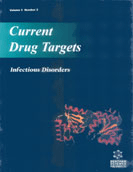Abstract
The application of nanomaterials in biomedicine is a very active field of research, as it has the potential for developing several innovations in health care, diagnosis, medical imaging and therapy. In particular, the use of nanostructured materials for drug formulations is drawing the attention of pharmaceutical companies and research groups around the world. The development of new systems for controlled drug transportation and delivery is a very complex multidisciplinary field since they must possess unique physical and chemical features to improve the stability of the active pharmaceutical ingredient, to enhance drug bioavailability and delivery efficiency, as well as to control the drug clearance rate. Nanomaterials present unique physical properties that offer several advantages over traditional carrier systems. There are several systems that can be selected for a specific formulation, depending on the administration route, such as carbon nanostructures (e.g., graphene, graphene oxide and carbon nanotubes), nanoliposomes, micelles, dendrimers, polymeric and inorganic nanoparticles (e.g., metallic, metal oxides and composites), among several others. All the aforementioned systems will require intensive research to thoroughly understand their safety and long-term effects in order for them to be included in health products in the future. This chapter reviews the most recent progress on the development of mesoporous nanocarriers for controlled transport and delivery of anti-cancer drugs. First, some fundamental ideas are discussed on the actual benefits and risks of using nanomaterials in pharmaceutical formulations, compared with current existing technologies. Some of the most representative mesoporous materials used to develop efficient nanocarriers are presented. Their physical and chemical properties are introduced to better understand their advantages in terms of the design of efficient systems for the controlled delivery and release of anti-cancer drugs. Moreover, the design of novel anti-cancer drug transport and delivery systems that harness the unique characteristics of mesoporous nanomaterials is addressed. Finally, some of the potential risks associated with the biomedical use of nanostructured materials, related to their diverse chemical compositions, physical properties and technological applications, are examined along with proposed ways to minimize their potential health and environmental impact.
Keywords: Anticancer Drugs, Bioavailability, Cancer, Controlled Release, Drug Delivery, Drug Release, Mesoporous, Metal Oxides, Nanomaterials, Nanocarriers, Nanocarbon, Nanotoxicity, Pharmaceutical Formulation, Targeted Delivery.






















